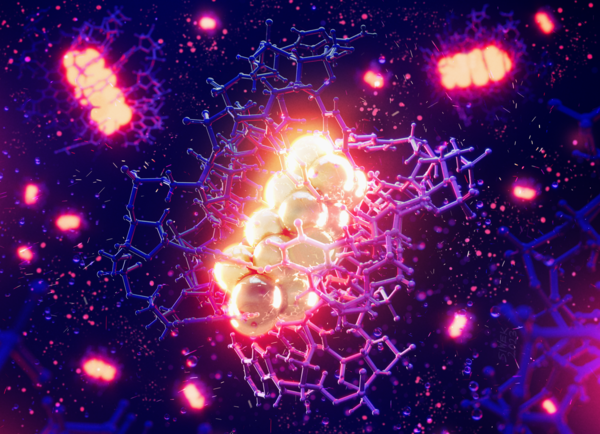Stacy Copp Using Light and Color for Bioimaging and Photonics Technologies

The Lab Beat
Nov. 18, 2025 - Stacy Copp, UC Irvine associate professor of materials science and engineering, has always been fascinated with light and color. “As a kid, I played with flashlights in the closet and watched rainbows when the sun would set,” she said. She went on to study physics and math in university, where a look under the microscope at beads loaded with fluorescent dye would spark her path as a scientist.
“They were twinkling and glowing yellow. I remember thinking at that moment, this is my universe under this microscope,” Copp said. Now she’s on the edge of making medical bioimaging breakthroughs by creating glowing infrared nanoclusters to see deep inside human tissues.
Copp has won prestigious awards and grants for this research, including the 2024 Director’s New Innovator Award and $2.1 million from the National Institutes of Health, as well as a $1.85 million grant from the Chan Zuckerberg Initiative.
The Copp Lab engineers DNA-stabilized nanoclusters that emit near-infrared light and can target and track things like tumors and other specific tissues in the body. “Our bodies and tissues are far more transparent to near-infrared light than to visible light, so if we had very brightly glowing near-infrared dyes, those could be used as medical contrast agents.” Copp said.
These agents could possibly be used for studying cancer, such as tumor development and metastasis, which means her research could someday replace the need for X-rays. “Over the last six years, my lab has used a series of machine learning-guided high throughput experiments to design DNA strands that will stabilize those types of near-infrared emitting nanoclusters,” Copp said. “Now we're also working on developing them into biocompatible labels for tissue imaging.”

Her lab is working on determining what DNA sequence is needed for each color and degree of glow. The DNA molecules wrap around a tiny cluster of 10 to 30 silver atoms to create brightly glowing nanoclusters. Different colors have specific applications. Near-infrared can be used for deep tissue biomedical imaging, while green, blue and yellow can be used for light harvesting and photonic applications.
Copp is also developing nanocluster-based materials that mimic the light-harvesting abilities of plants and other organisms for applications in solar energy harvesting and solar fuels. The lab is working on using DNA as a tool to engineer ways to stack nanoclusters next to each other so they can funnel energy from light, which could lead to new tools for photovoltaics and fuel generation. For this work and other nanophotonics related projects, Copp was awarded prestigious early career awards including a five-year $875,000 grant from the U.S. Department of Energy and a five-year $990,000 grant from the U.S. Army Development Command/Army Research Laboratory.
Her ultimate vision is to enable scientists to manipulate light for a wide spectrum of applications. “I would love to be able to develop a platform for people to, in a designer way, create new light-emitting and light-harnessing materials in the same ways we see nature doing,” Copp said. “Clearly, photosynthesis is this incredible way of harnessing energy from the sun and using that to drive life. I hope to eventually see humans be able to achieve that same level of sophisticated control of light through advances like what my lab is doing.”
